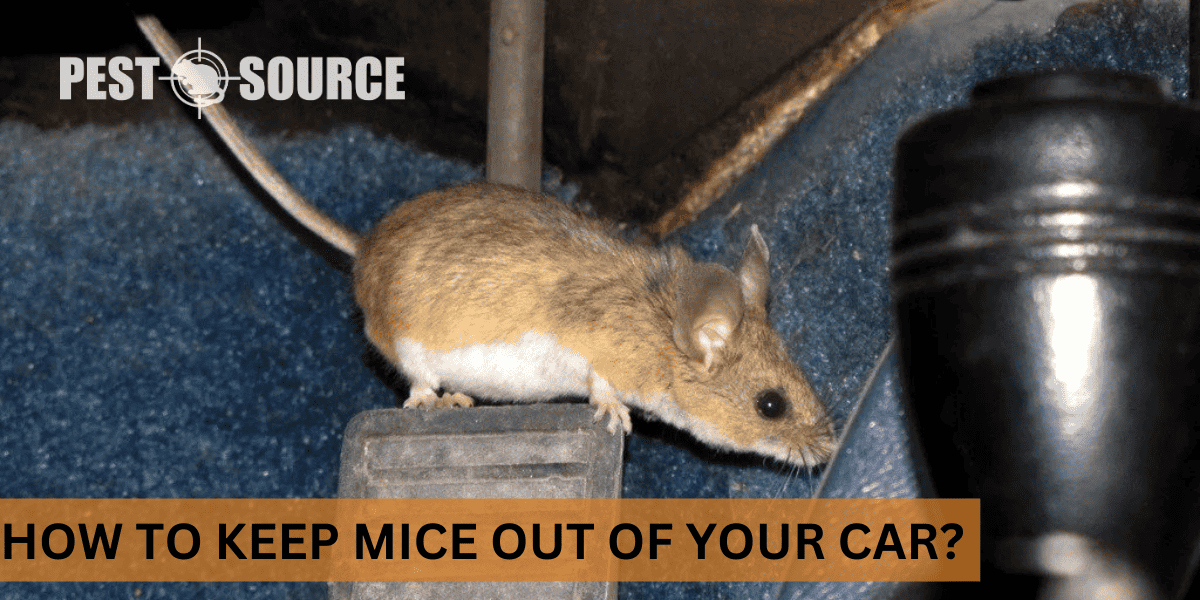Keeping mice out of your car is crucial, as these small rodents can cause significant damage to wiring, upholstery, and other components. Let’s explore comprehensive strategies for preventing mice infestations in your vehicle, focusing on both immediate and long-term solutions.
POINTS
- Utilize mice deterrents and natural solutions, such as ultrasonic repellents and essential oils, to prevent mice from entering your car.
- Identify and seal potential entry points for mice in vehicles, including ventilation systems, steering columns, and trunk gaskets, using wire mesh and silicone caulk.
- Remove mice humanely with live traps or ultrasonic devices, and follow up with thorough cleaning and disinfecting of the car’s interior to eliminate any health risks.
- Understand the potential risks and damages caused by mice, such as electrical issues, contamination, and damage to car parts, and take proactive measures to mitigate these risks.
- Conduct regular vehicle check-ups and inspections for signs of mice, and seek professional pest control and mechanic services if an infestation or damage is suspected.
Utilize Mice Deterrents for Cars
One effective way to prevent mice from taking up residence in your car is to use deterrents specifically designed for vehicles. Here are some options:
- Ultrasonic repellents: These devices emit a high-frequency sound that is unpleasant to mice but inaudible to humans.
- Peppermint oil: Soak cotton balls in peppermint oil and place them around the car, as mice dislike the strong scent.
Natural Solutions to Keep Mice at Bay
In addition to commercial deterrents, natural solutions can be equally effective. Consider the following:
- Essential oils: Similar to peppermint oil, other essential oils like clove or cayenne pepper can repel mice.
- Dryer sheets: Tuck dryer sheets under the seats or in the trunk. The scent may help keep mice away.
Seasonal Preventive Measures
Different seasons may require unique approaches to keep mice out of your car. Here’s what you can do:
- In winter: Mice seek warmth. Ensure your garage is sealed and avoid leaving your car idle for long periods.
- In summer: Mice look for nesting sites. Regularly clean out clutter from your car to reduce hiding spots.
Identifying and Sealing Mice Entry Points in Vehicles
Understanding how mice get into cars is the first step in sealing off their entry points. Mice can squeeze through incredibly small spaces, so it’s important to be thorough.
Common Entry Ways for Mice
Mice typically enter vehicles through:
- Ventilation systems: Check for gaps or holes in the venting.
- Steering columns and pedal shafts: Inspect these areas for openings.
- Trunk gaskets and hood insulations: Look for signs of gnawing or wear.
Instructions for Sealing Potential Entry Points
Once you’ve identified how mice can get into your car, take the following steps to seal these entry points:
- Use wire mesh: Cover ventilation openings and other large gaps with wire mesh.
- Apply silicone caulk: Seal smaller openings with silicone caulk, which is durable and flexible.
- Replace damaged parts: If gaskets or insulation are damaged, replace them promptly.
Importance of Regular Maintenance and Inspections
Regular maintenance and inspections are key to detecting early signs of mice and preventing infestation. Here’s what you should do:
- Check under the hood: Look for droppings, nesting materials, or chewed wires.
- Inspect your garage: Ensure that your parking area is also free from potential entry points and attractants.
- Stay vigilant: Even if you don’t see mice, remain on the lookout for signs like unusual smells or noises.
By following these guidelines, you can significantly reduce the risk of mice making a home in your car.
Removal and Cleanup of Mice in Cars
If you’ve discovered that mice have already infiltrated your car, it’s essential to remove them humanely and clean up after to ensure your vehicle is safe and sanitary.
Humane Removal Methods for Mice
When considering how to get mice out of your car, it’s important to choose humane and effective methods:
- Live traps: Set up live traps with bait like peanut butter inside your vehicle. Once captured, release the mice far from residential areas.
- Ultrasonic devices: These can also be used to encourage mice to leave without harming them.
Always check traps regularly to avoid unnecessary suffering for the trapped mice.
Guidelines for Cleaning and Sanitizing
After removing the mice, thorough cleaning is crucial:
- Remove all debris: Clear out any nesting materials, droppings, and food remnants.
- Disinfect: Use a mixture of bleach and water or a commercial disinfectant to clean affected areas. Always wear gloves and a mask to avoid contamination.
- Vacuum: Thoroughly vacuum the interior to remove any lingering particles.
Long-Term Prevention Strategies Post-Removal
To prevent future infestations:
- Keep your car clean: Regularly remove food wrappers, crumbs, and clutter.
- Seal entry points: Revisit the sealing of entry points as discussed earlier.
- Regular inspections: Make it a habit to inspect your car frequently for signs of mice.
Understanding the Risks and Damages of Mice in Cars
Mice infestations can lead to serious risks and damages, affecting your car’s functionality and safety.
Potential Risks and Damages Caused by Mice
The presence of mice can result in:
- Electrical issues: Mice can chew through wires, leading to electrical malfunctions or even fires.
- Contamination: Droppings and urine can spread diseases and cause unpleasant odors.
- Damage to car parts: Upholstery, insulation, and filters can all be damaged by nesting and gnawing.
Specific Concerns Related to Mice in Car Interiors and Engines
- In the interior: Mice can destroy seats, carpets, and headliners, leading to costly repairs.
- In the engine: They can compromise the performance and safety of your vehicle by damaging critical components.
Regular Vehicle Check-Ups and Professional Services
To safeguard against the risks associated with mice:
- Perform regular vehicle check-ups: Look for any signs of damage or infestation.
- Seek professional services: If you suspect an infestation or notice damage, professional pest control and mechanic services may be necessary.
By understanding the risks and taking proactive measures, you can protect your car from the damages caused by mice. Remember, prevention is always better than cure, so keep up with regular maintenance and stay vigilant to keep these pesky rodents at bay.



